Keywords Explorer
How to use the Matching terms report
In this report, we show keyword ideas that contain your target keyword or phrase.
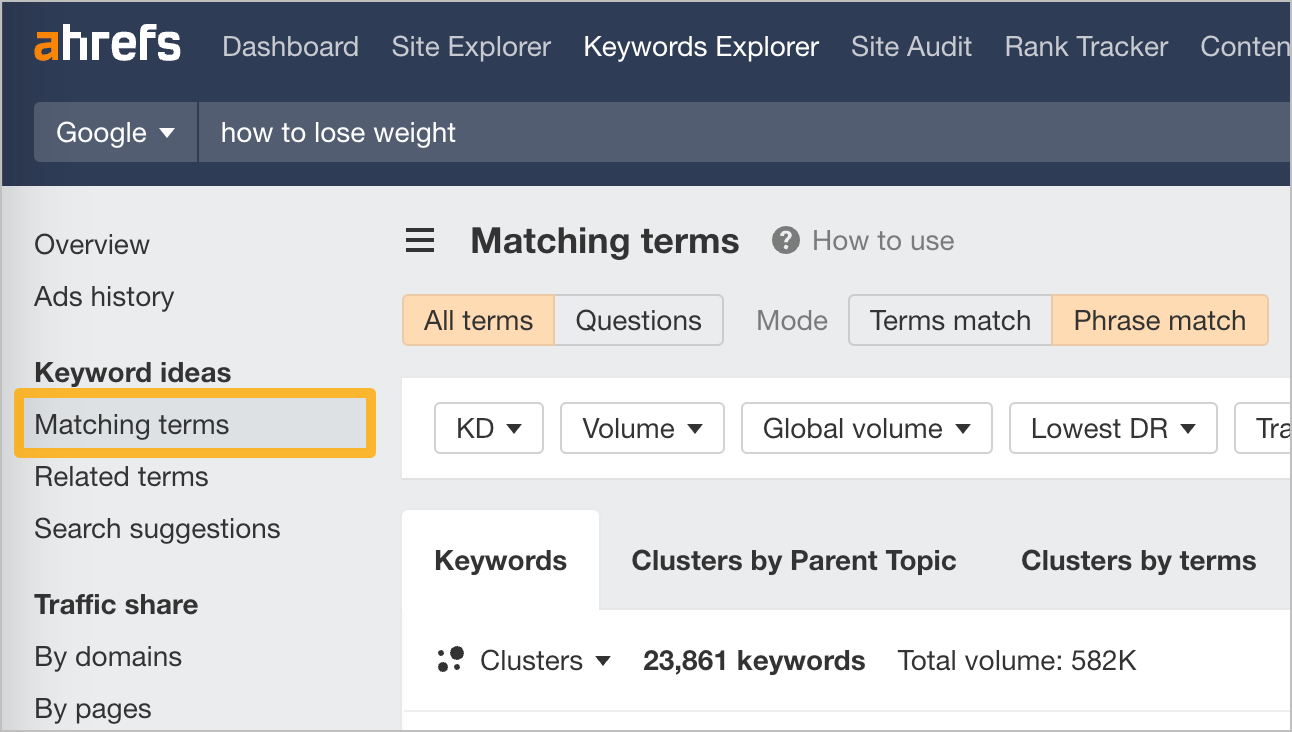
Toggle for “Questions” to see keywords phrased as questions or “All” to see all keyword ideas.
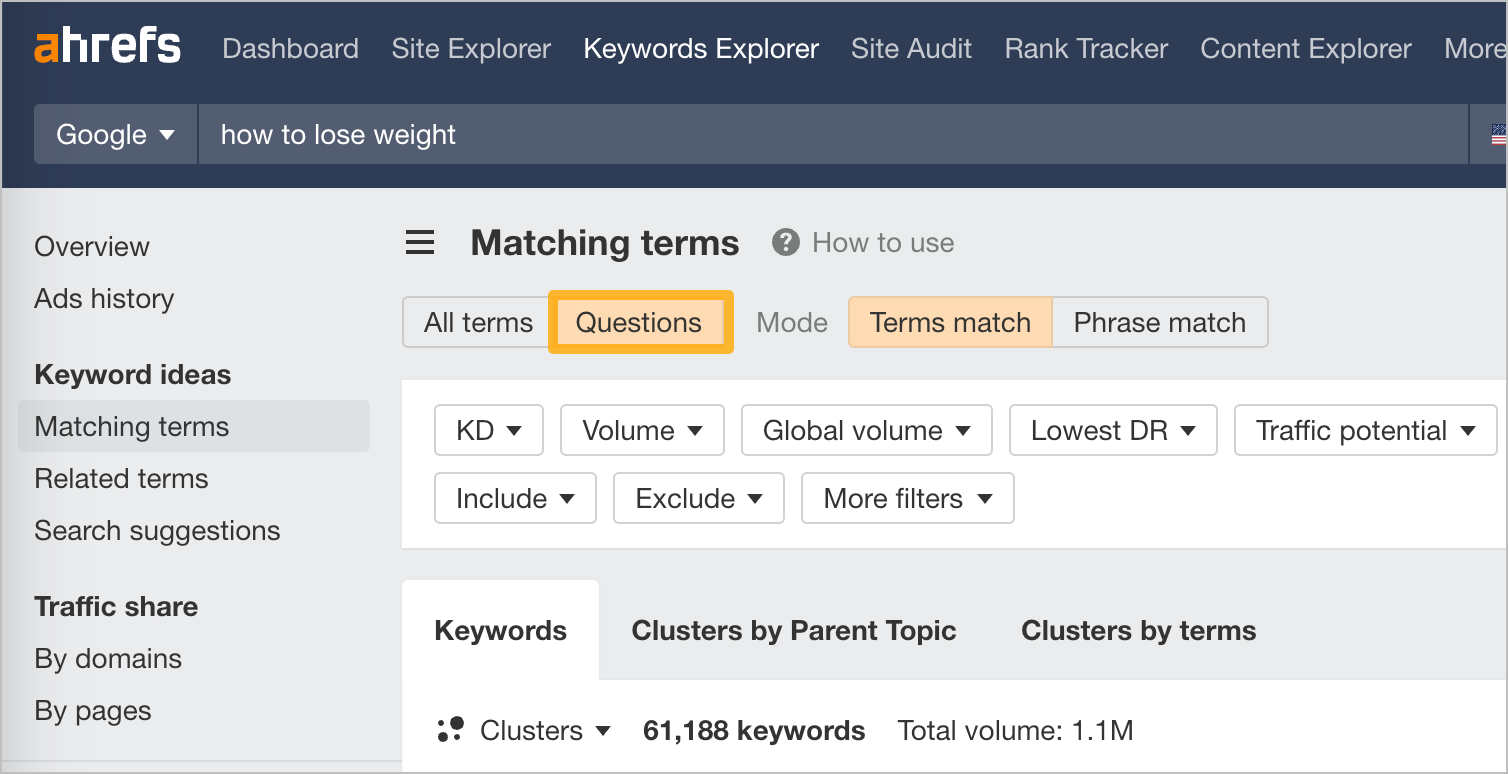
You can also choose between two modes:
- Terms match - Shows you all keyword ideas that contain all the words from your query in any order. For example, if your seed keyword is “lose weight”, then “how much weight can you lose in a month” would appear here.
- Phrase match - Shows you all keyword ideas that contain your target keyword or phrase in the order it’s written. For example, if your seed keyword is “lose weight”, then “how to lose weight” would appear here.
Below are some actionable ways to use this report.
Find high-volume, low-competition keywords
Set the search volume filter to a minimum value of 500 and the Keyword Difficulty (KD) filter to a maximum of 10.
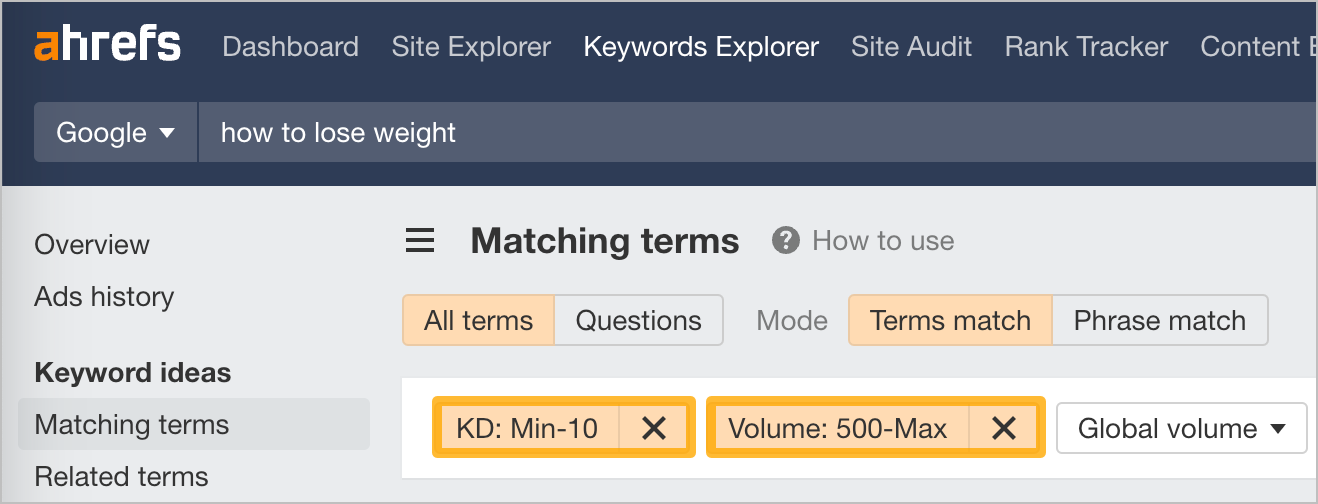
Here are some potential weight loss-related keywords that may be worth targeting.
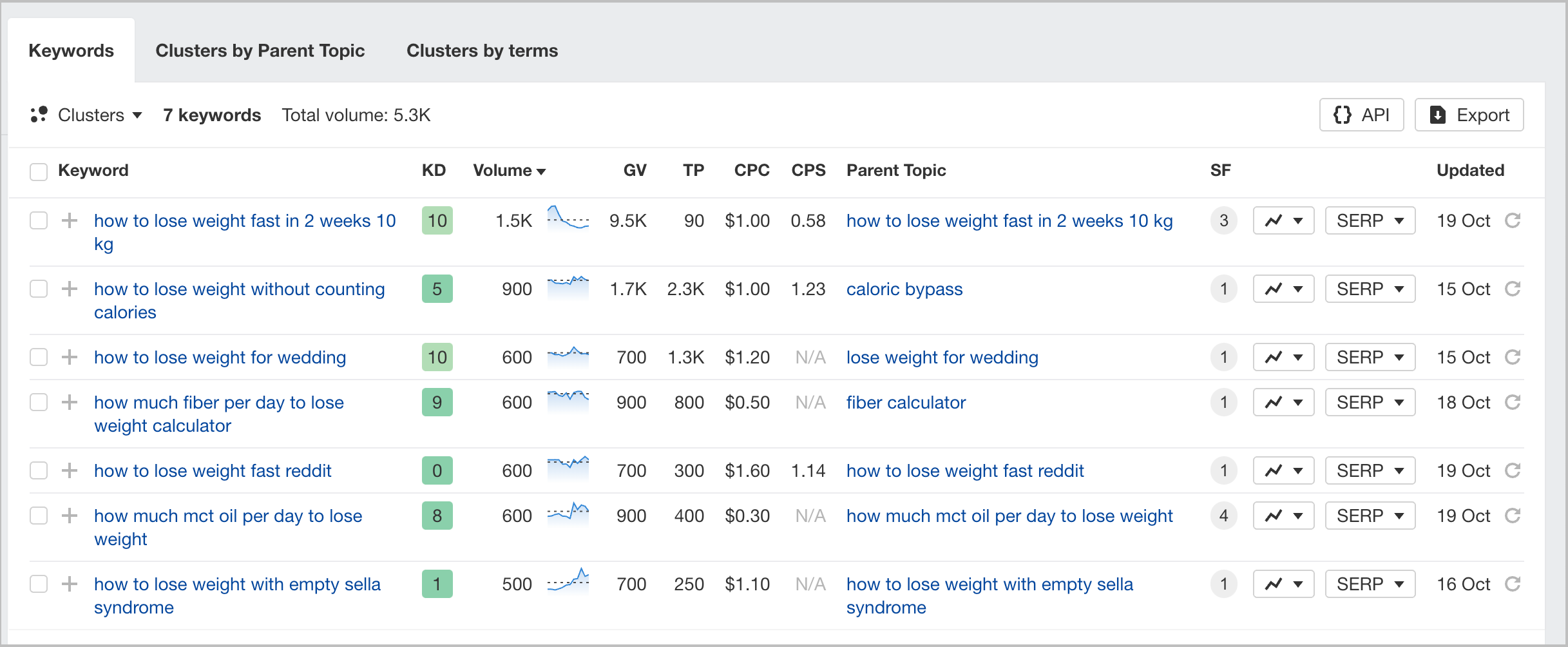
The numbers suggested for the search volume and KD filters will vary based on the breadth of your niche. Feel free to play around with the filters until you get a list of keywords you’re satisfied with.
Find low-competition keywords where non-authoritative sites rank in the SERPs
Let’s go with the same example from above: “how to lose weight”. Only this time, set a Lowest DR filter with a DR value of 30 and SERPs ranking in the Top 5.
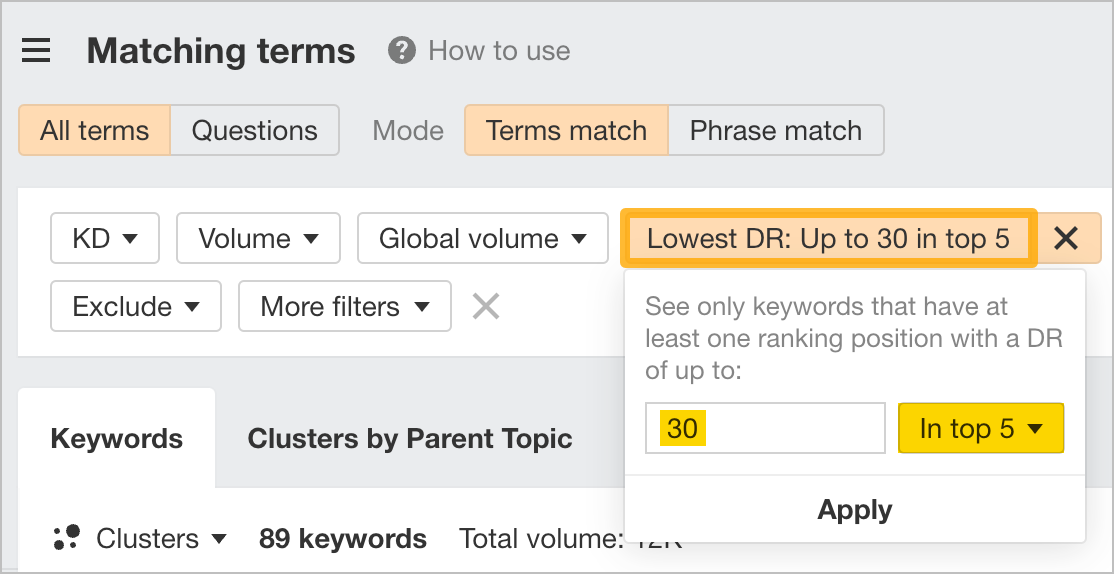
This will show us keywords where a website with a DR of 30 is ranking in the top 5. Keywords that have varying keyword difficulty scores.
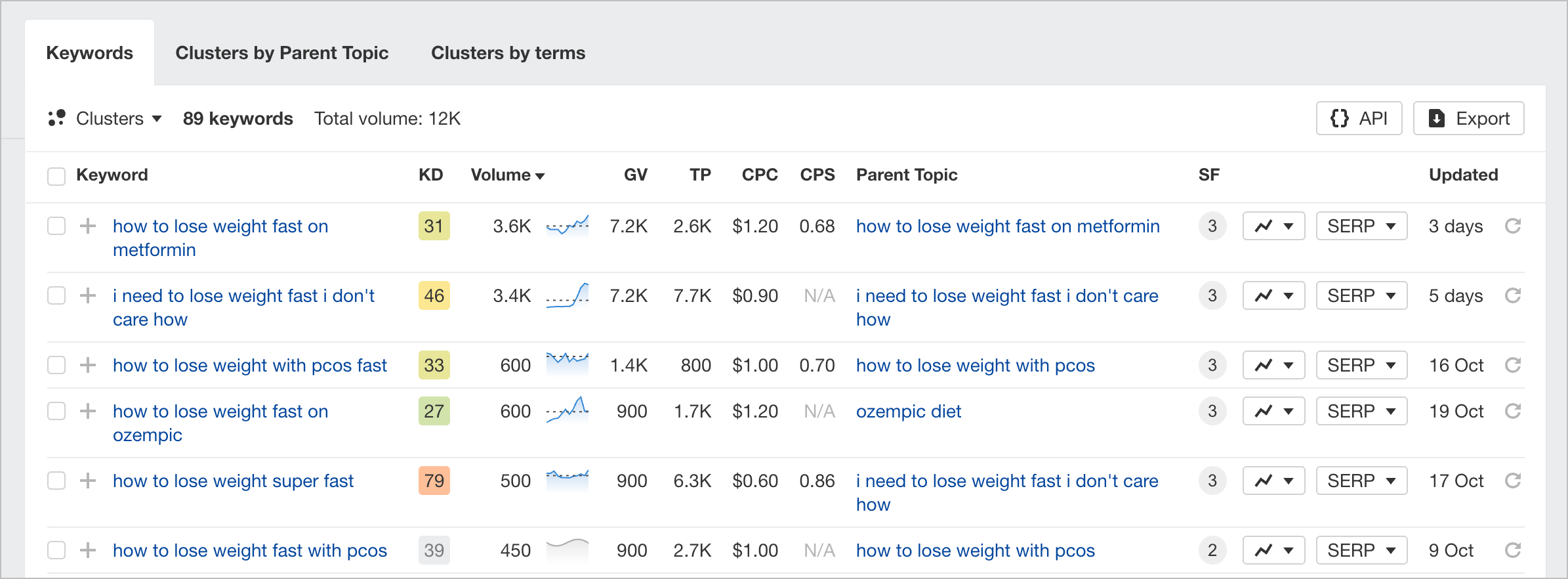
And if we expand one of the SERPs, you’ll notice there is a website there with a DR value below 30.
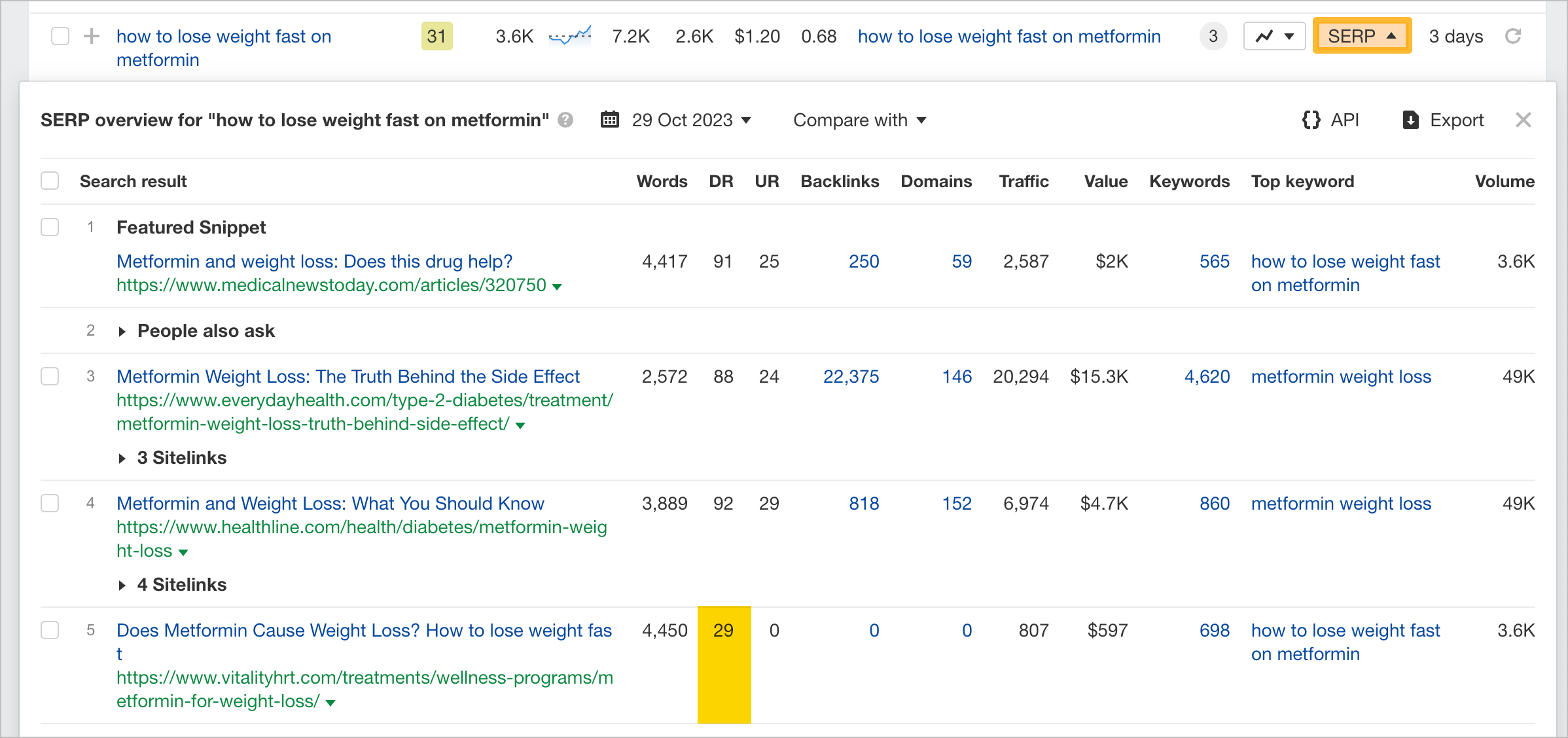
This doesn’t mean you can’t be the first result to penetrate the top 5 or top 10 search results, if there are no low DR websites in the SERPs whatsoever.
Find keywords for which your site doesn’t rank for
Type in your seed keyword. Then set the Target filter to show only keywords where your target doesn’t rank in top 10.
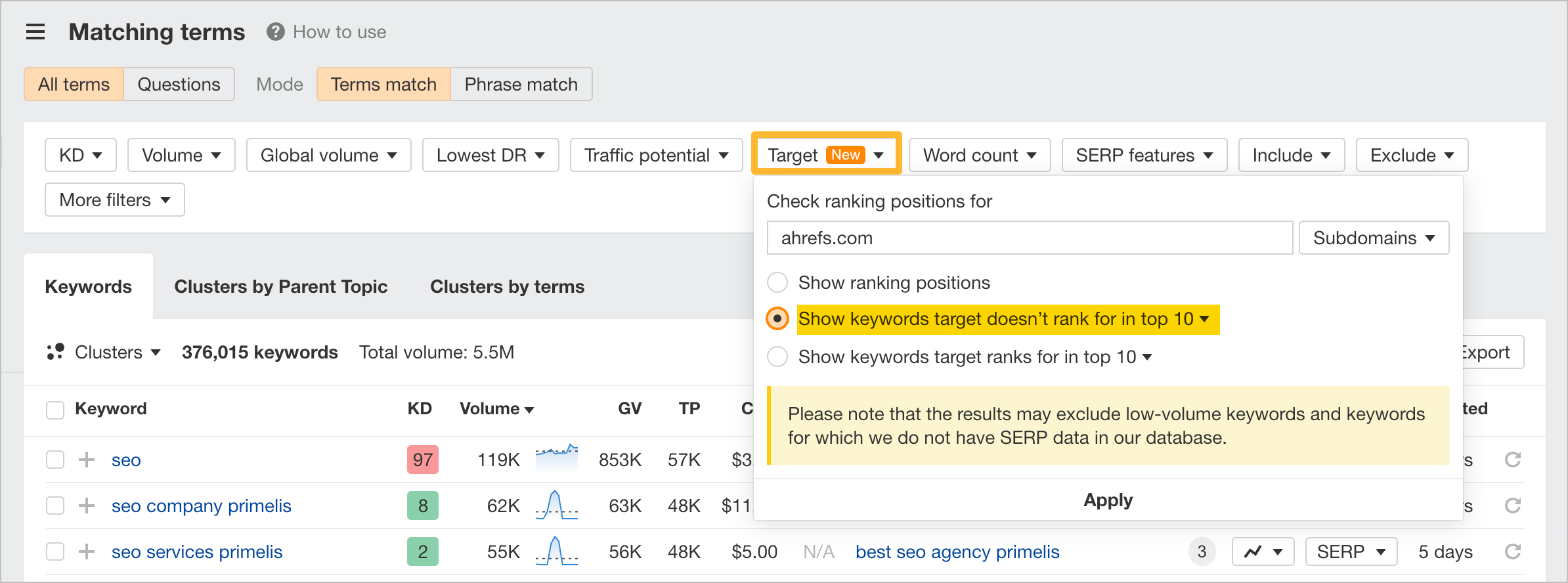
This setting will show you two types of keywords:
- Keywords for which you don’t rank at all and
- Keywords for which you rank in low positions
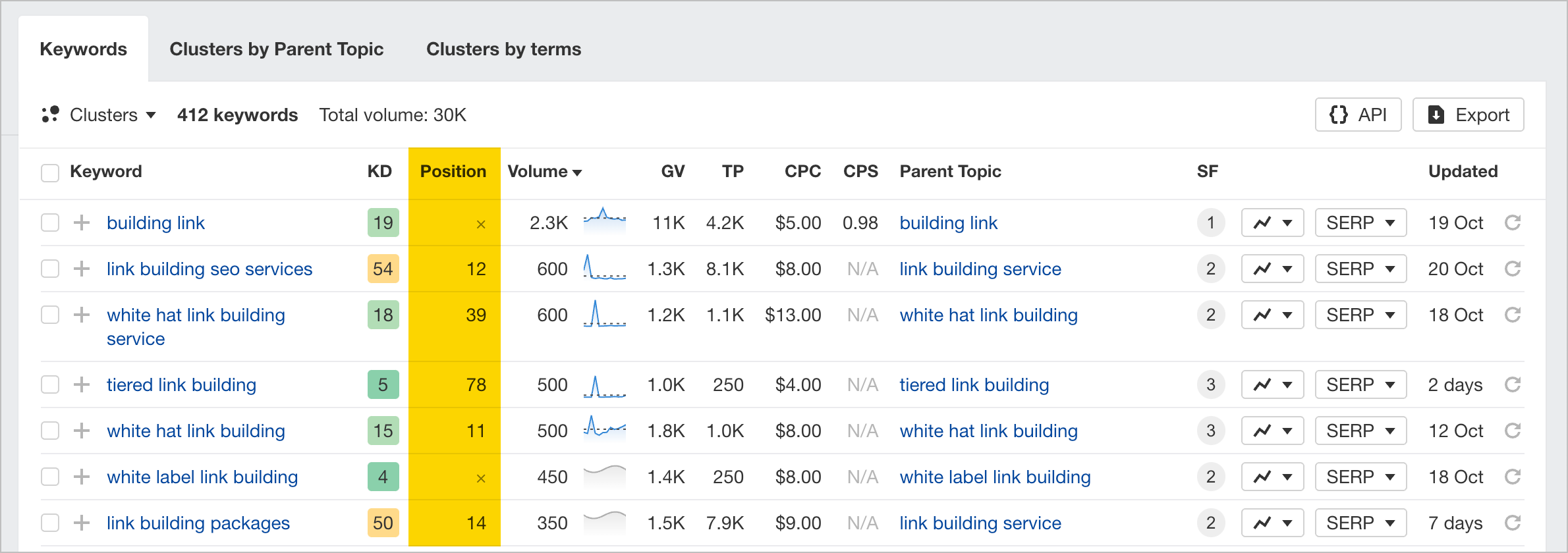
For the first type, you’d typically create new content. For the second type, you can improve existing content.
To prioritize which pages to improve, export the keywords and sort them using the “Position” column.
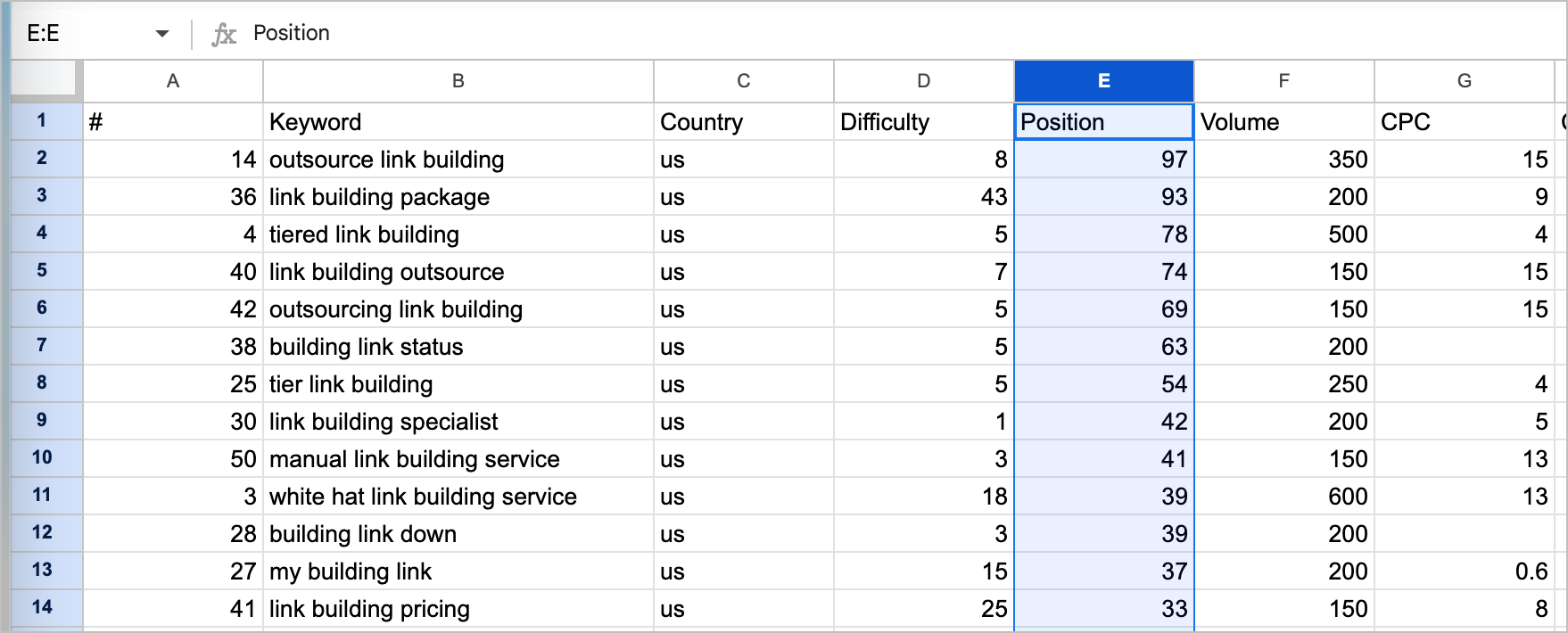
You can also use the Target filter where your target website doesn’t rank in the top 100, to avoid topics that you’ve already covered.
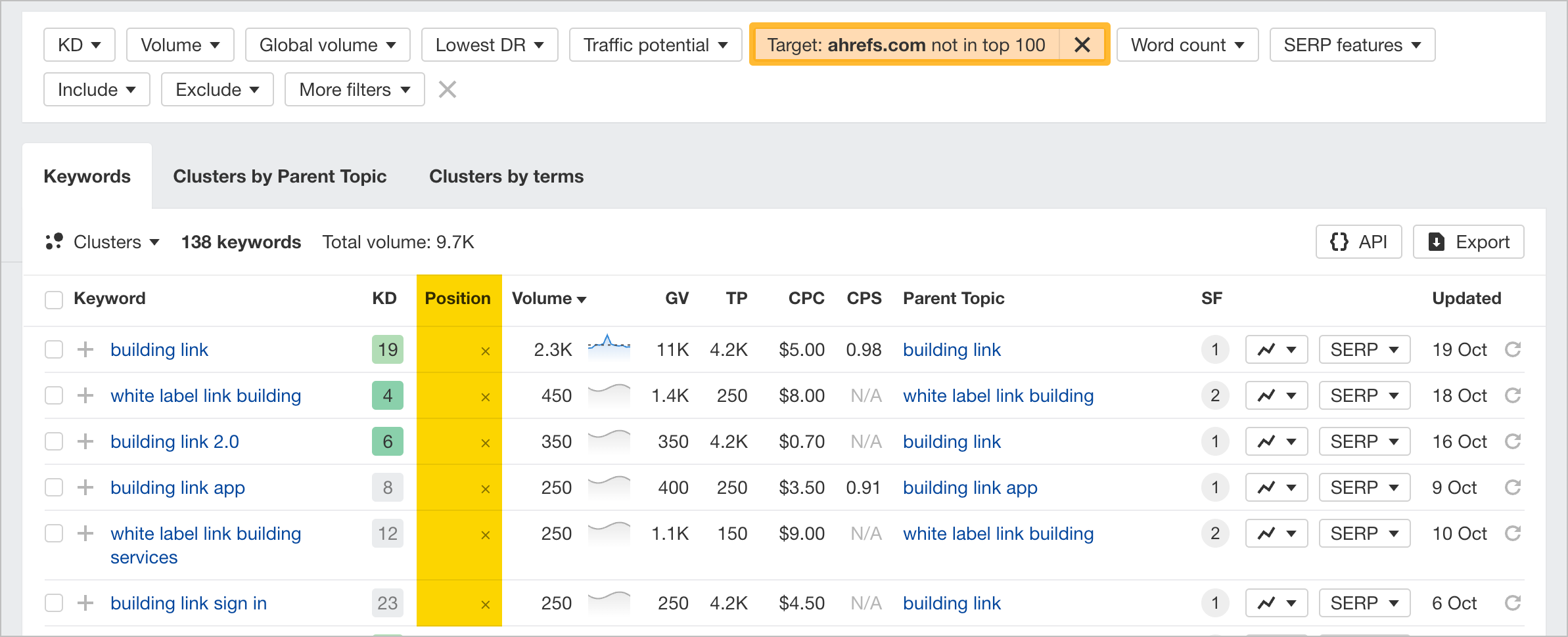
Find keywords with SERP features
SERP features are anything in the search engine results pages that are not traditional search results. They provide additional and related information on the search query.
Depending on your goals, you can filter for different types of SERP features. For example, you can filter for featured snippets, knowledge panels, people also ask boxes, and so on.
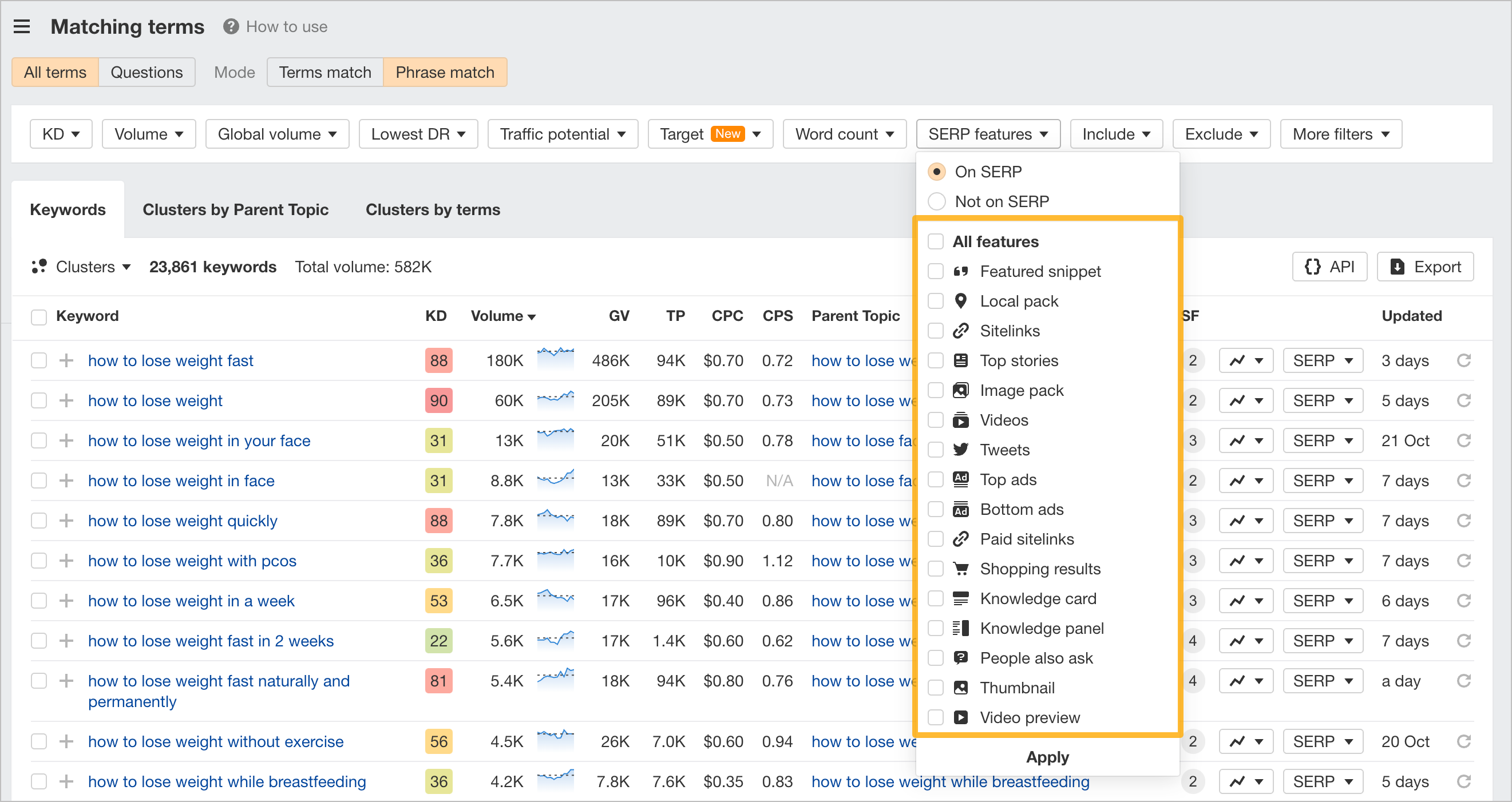
Find informational keywords
Informational queries are those that searchers use to gain more knowledge on a topic. Typically, they have modifiers like:
- how
- what
- who
- where
- why
- guide
- tutorial
- resource
- ideas
- tips
- learn
- examples
Enter these modifiers in the “Include” box. Select “Any word.”
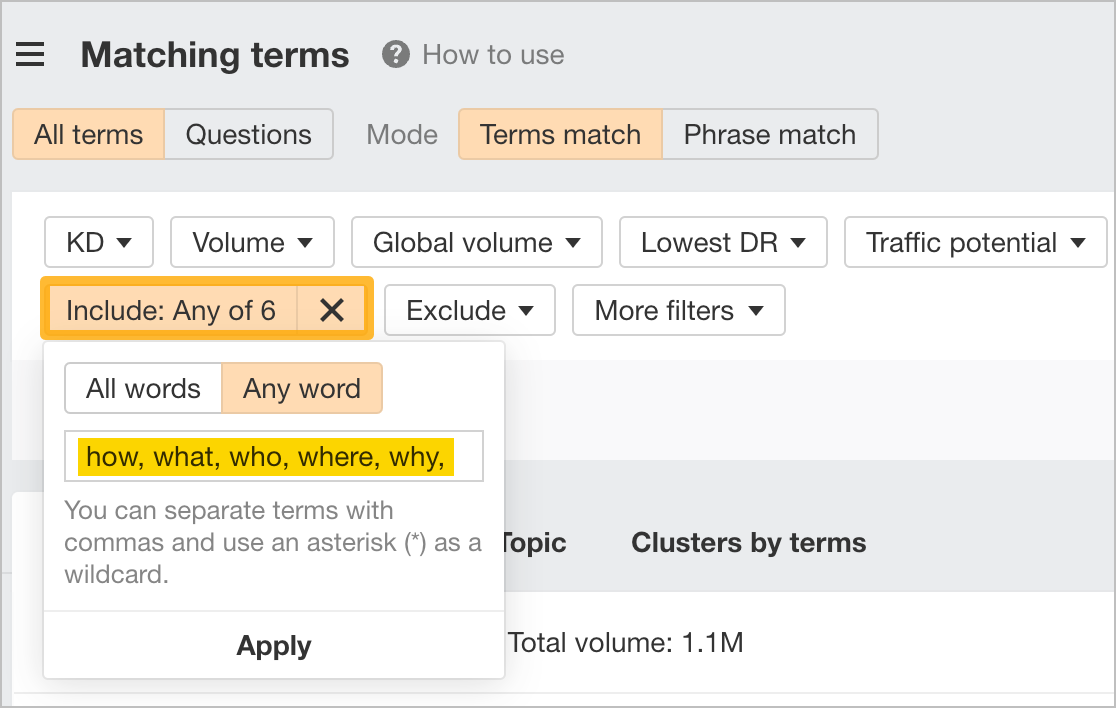
Click “Apply” to see queries that include one or more of the modifiers in your list.
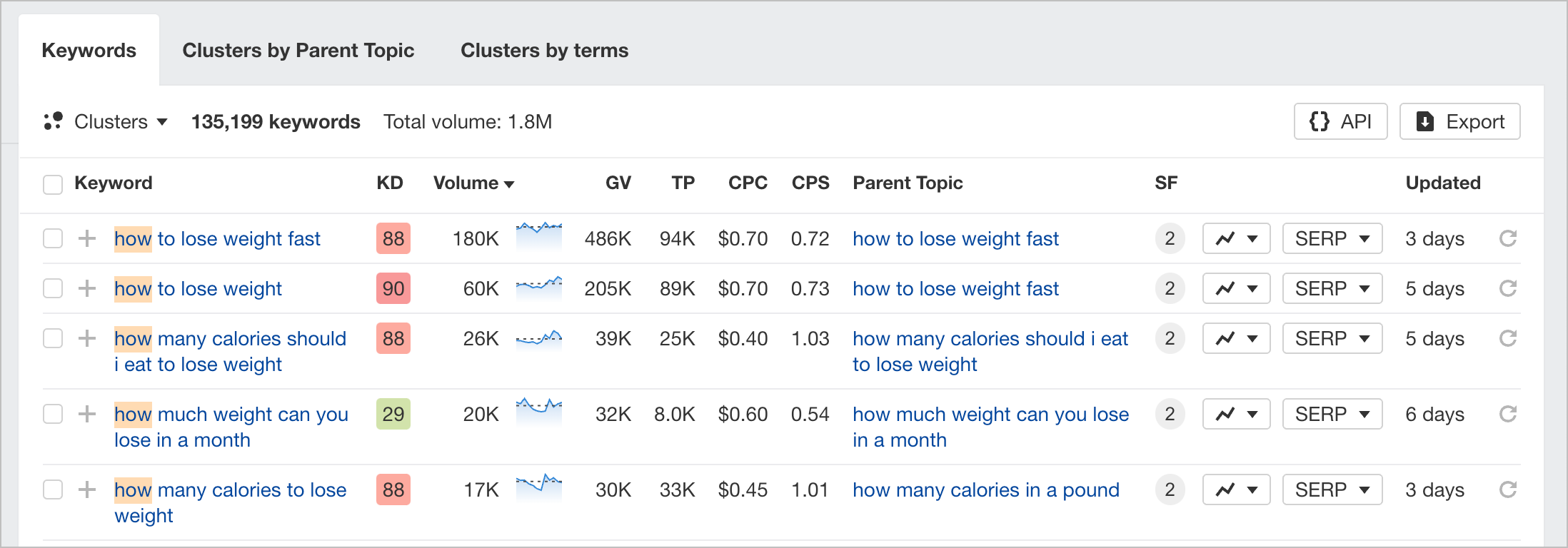
Find transactional keywords
Transactional keywords are queries where searchers likely have purchase intent (i.e., they're looking to buy something). Typically, they have modifiers like:
- buy
- coupon
- order
- purchase
- cheap
- price
- pricing
Enter these words in the Include box. Select “Any word.”
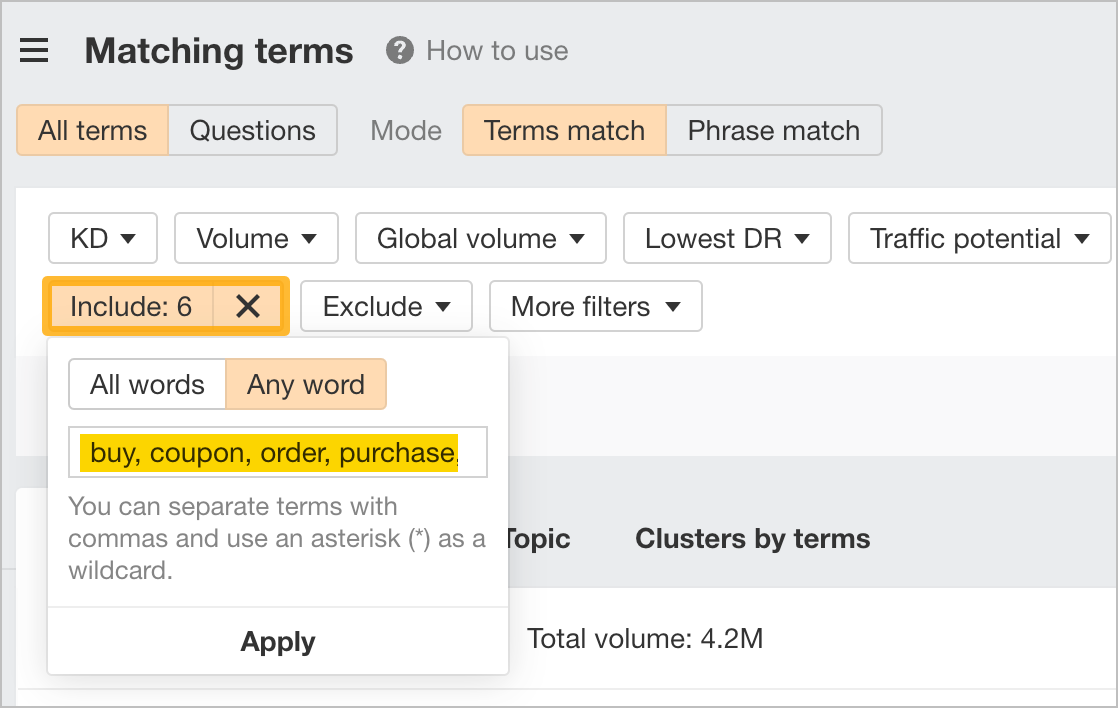
Click “Apply", then hit “Show results”.
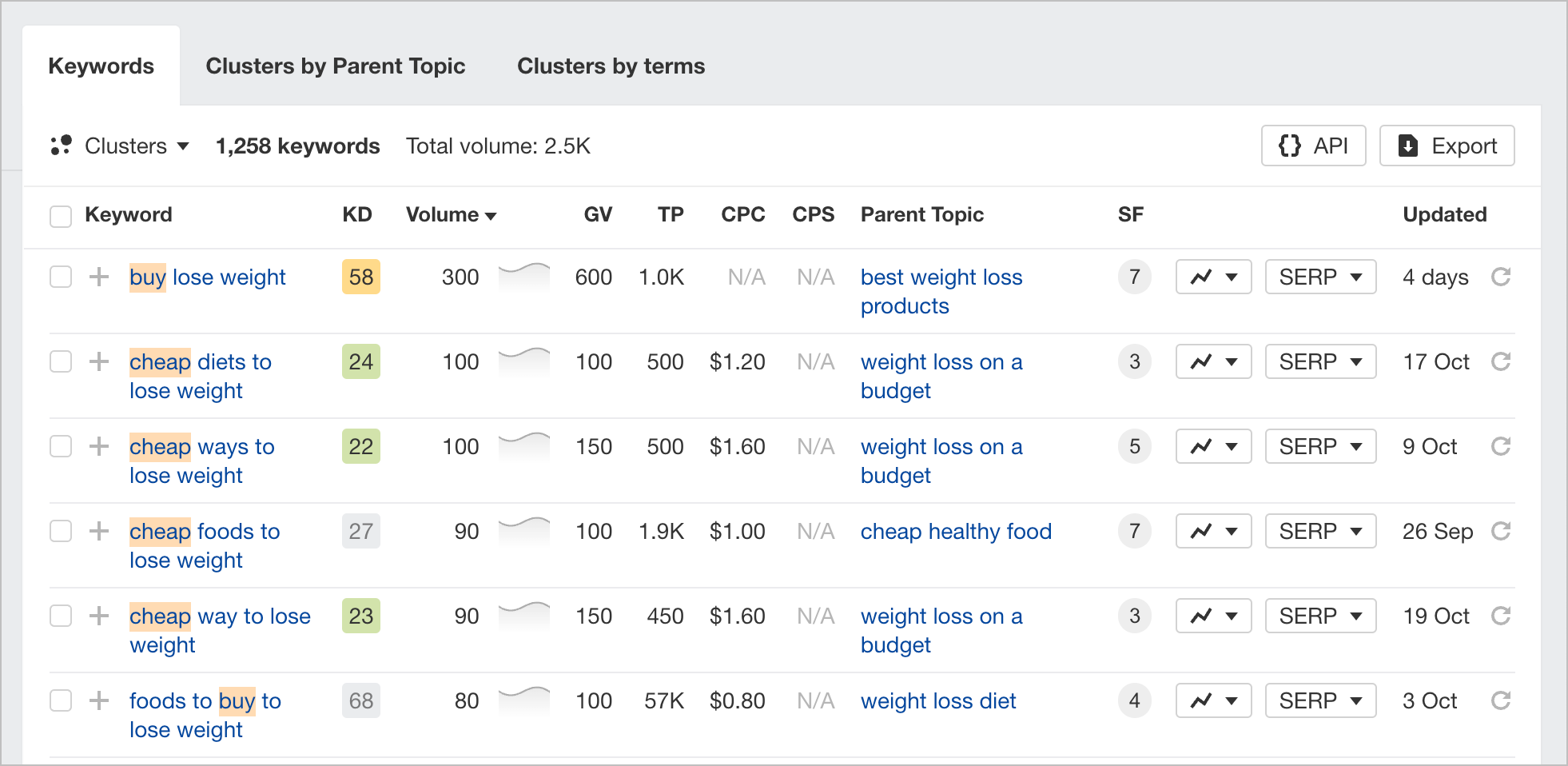
Cluster keyword ideas by parent topic
Let’s say you own a camping website and want to find topic ideas for a blog post.
Enter a few seed keywords like: “camping”, backpacking”, “hiking”. Then click on “Cluster by Parent Topic”.
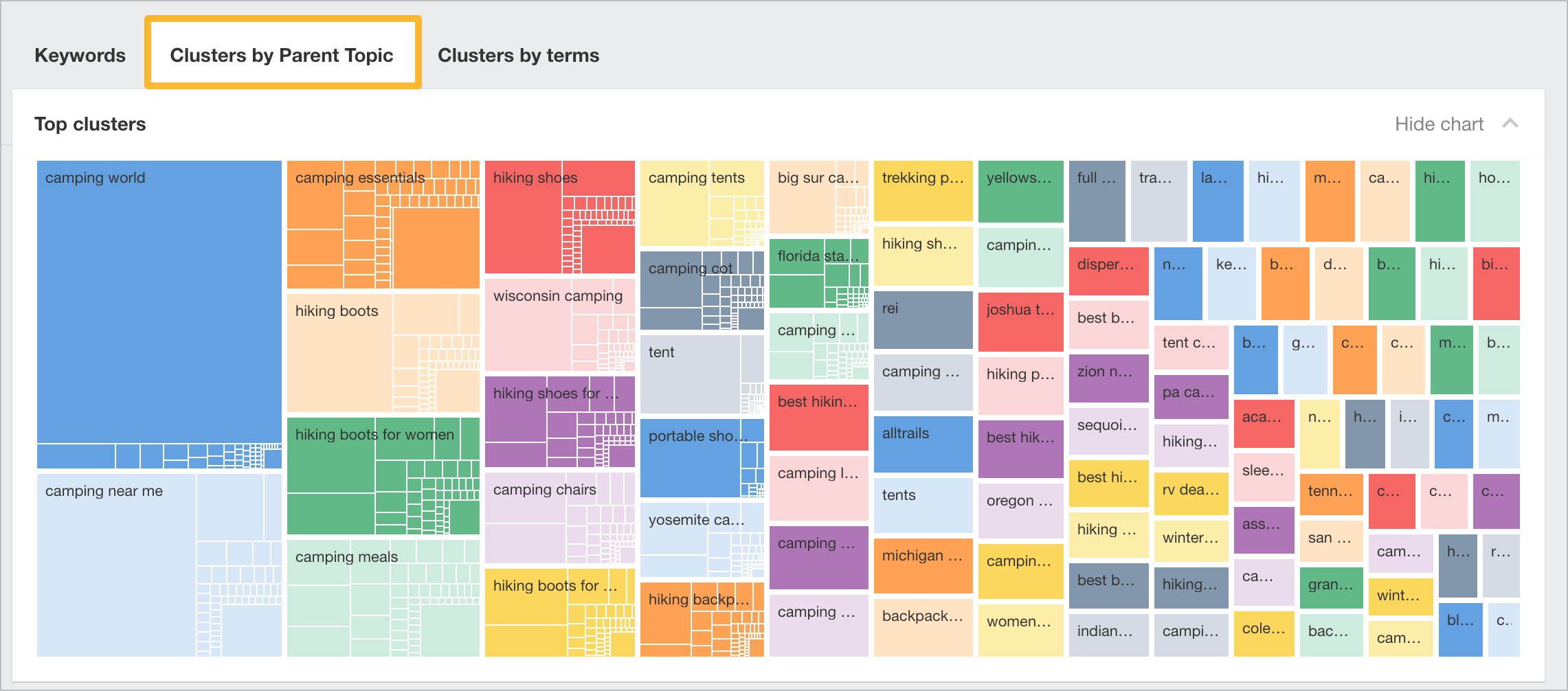
Parent Topic determines if you can rank for your target keyword while targeting a more general topic instead. To identify the Parent Topic, we take the #1 ranking page for the keyword and find the query responsible for sending the most search traffic to that page.
You can now see keyword ideas listed by these Parent topics in a treemap format. The larger the rectangle, the larger the search volume for the parent topic.
If we scroll down and look at the cluster topic metrics, a topic worth considering here is "camping essentials”.

Clicking it shows us a cluster of 608 long-tail queries with the same Parent Topic, which could be used as subtopics for our blog post.
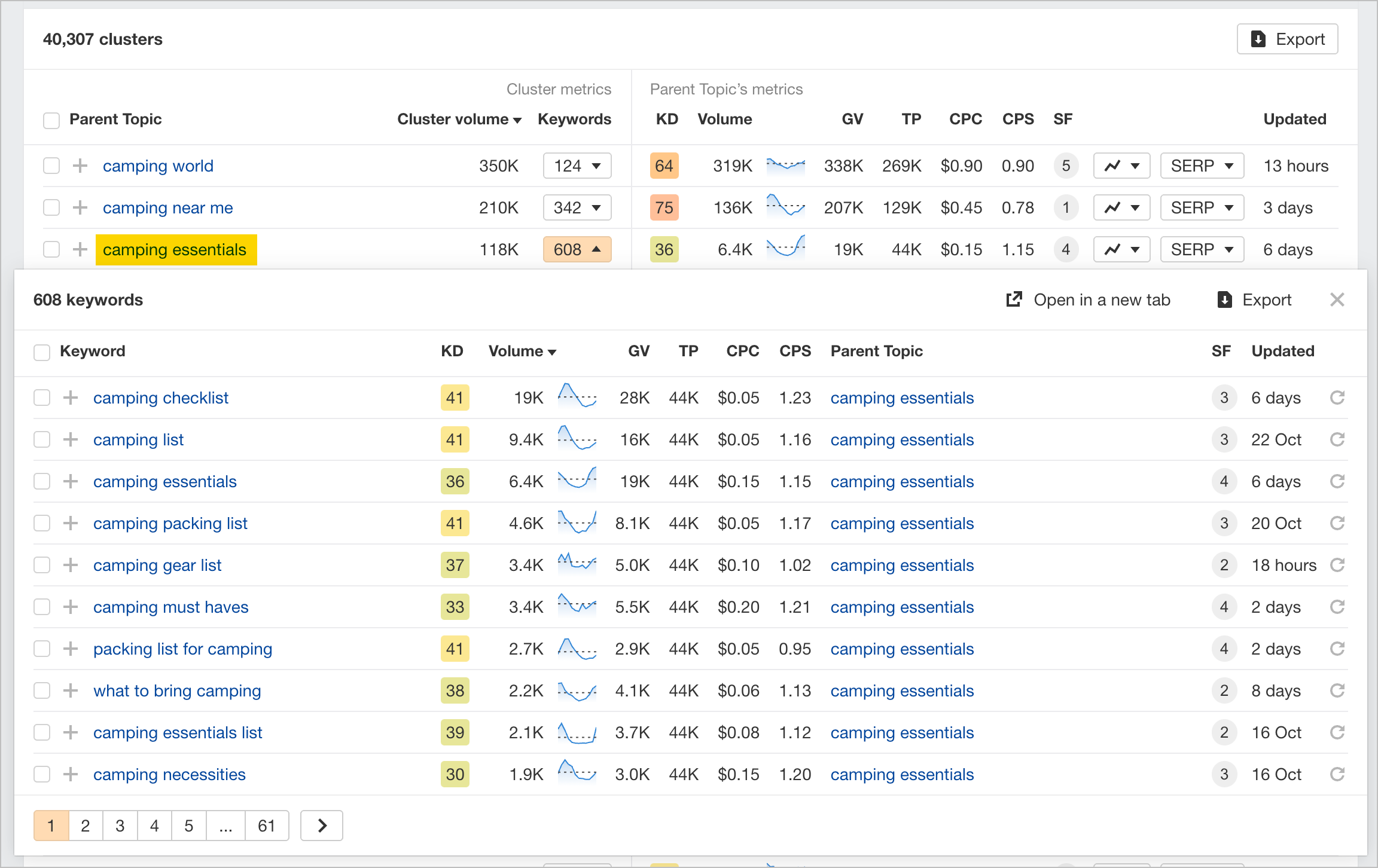
Our advice here isn't to sprinkle relevant keywords throughout your post but rather to cover relevant subtopics to increase its comprehensiveness and relevance.
Learn how to create a great piece of content in this video:
Cluster keyword ideas by terms
Looking for keyword ideas with particular modifiers or terms? You can find them easily in the “Terms” column.
Click on the modifier that best fits what you’re looking for.
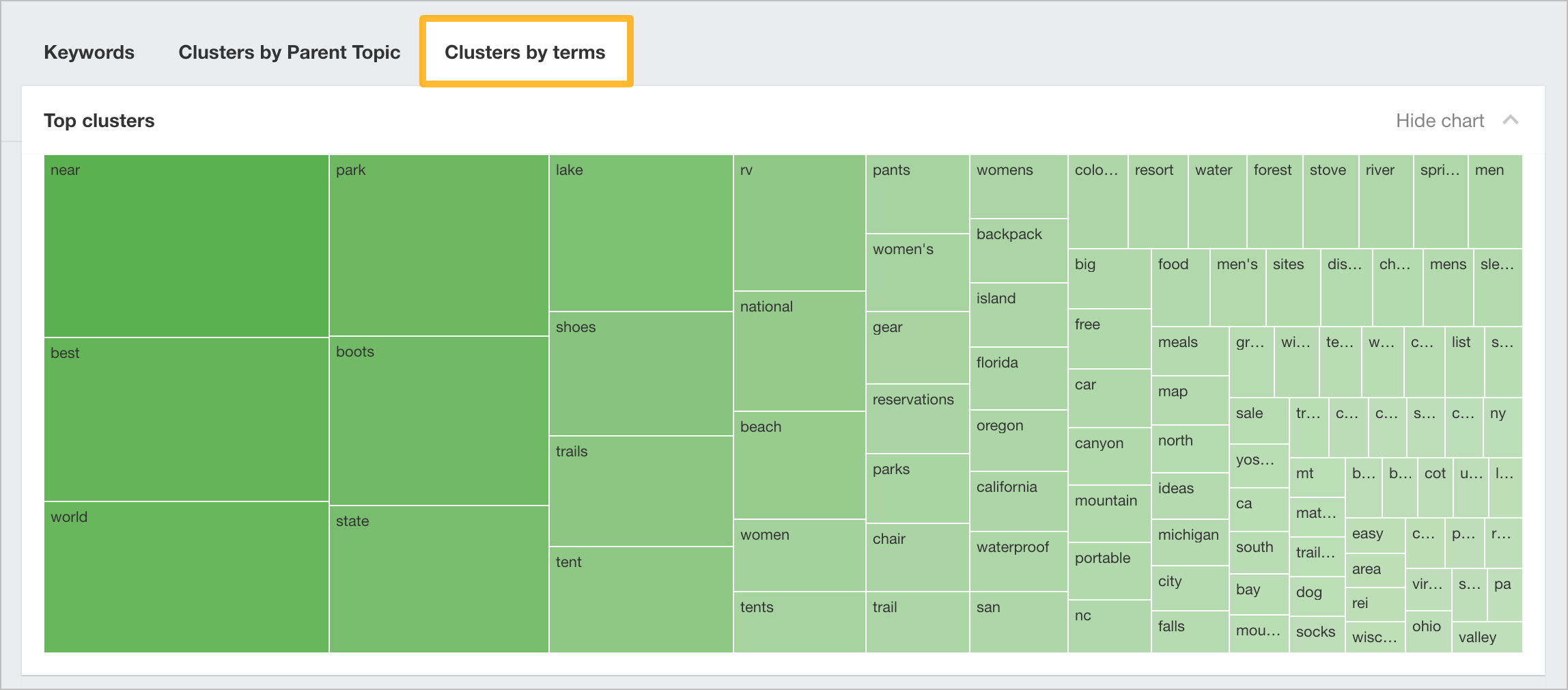
If we take a closer look at the cluster table, it looks like “park”,”trails”, and “rails” might be lucrative modifiers.
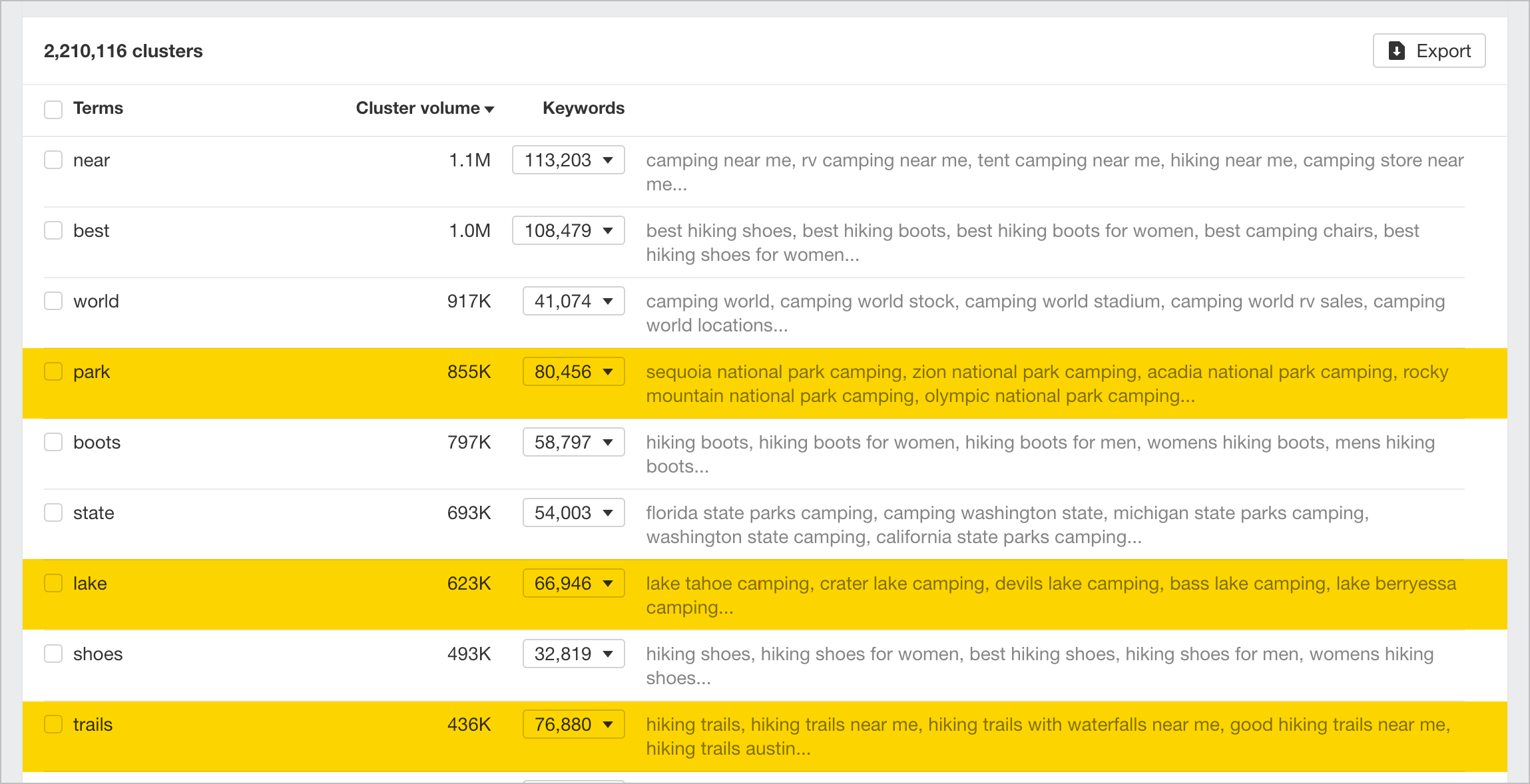
See SEO metrics for the top-ranking pages
Click the “SERP” button beside any keyword to see the SERP Overview. This shows the first page of search results for your keyword along with important SEO metrics.
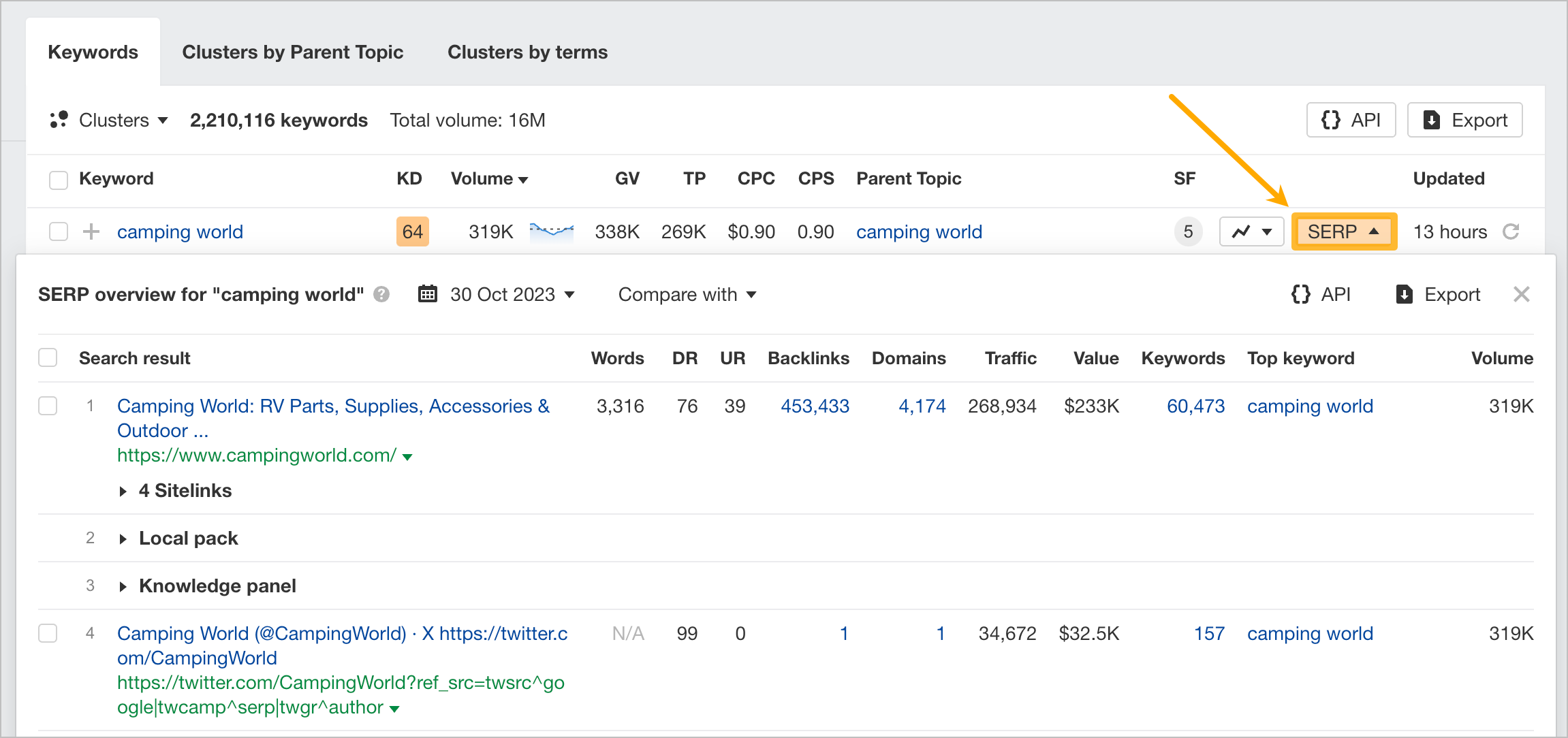
Analyze these metrics to assess the ranking difficulty of your target keyword.
Keep learning
Check out this video to learn how to do keyword research:
Or read some of the articles on the Ahrefs blog: